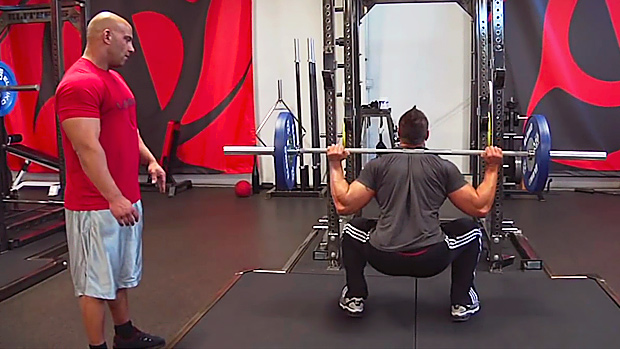Bring Back the Bench, Minus The Shoulder Pain
Since many lifters focus on mirror movements like presses and curls, a cumulative stress cycle through the shoulders usually results in overuse, pain, and injuries. Front-side shoulder pain is common.
But the last thing many diehard lifters are going to skip is their bench press. So instead of continuing to press through pain, avoid the chronic stress by fixing your position. Here's how.
You've probably heard that you must drive your shoulder blades down into the bench to "stabilize" them in order to press without pain. While this is true to some extent, what eventually ends up happening is an exaggeration causing poor positioning at the shoulder blades, leaving you in more pain than before.
I've stopped using the cue "scaps against the bench" with my athletes and instead teach them "co-contraction" between their lats and pecs in order to add real stability through the shoulder girdle. This limits unwanted and unstable range of motion while also enhancing the mind-muscle connection.
Trying to drive your scaps into the bench misses the mark because it encourages you to use a passive position to achieve a setup instead of working actively to get your shoulders and upper quadrant into position and having the ability to keep it there.
You want both the pecs and lats to create "pre-tension" at the top of a pressing movement, whether you're using a barbell or dumbbells. Contracting the two most powerful movers of the upper body will produce the optimal shoulder joint positioning. This will ultimately improve the feel and stability of the bench press, and help you maintain control of these positions throughout it.
Squeeze Your Lats and Pecs Together!
If you don't have a coach or training partner telling you this cue, simply think to yourself, "squeeze lats and pecs together." If you have trouble with this, squeeze the bar as hard as you can, THEN go into the co-contraction.
Using this reminder and setup has the added benefit of increasing your mind-muscle connection. Because the pre-tensioning of the pecs – in addition to the lats – is active, we're grading the eccentric portion of the lift through the pecs, which is great to enhance the feel and improve contraction quality.
This may be the most powerful shoulder fix that you could be using, so make sure to give it a try.




